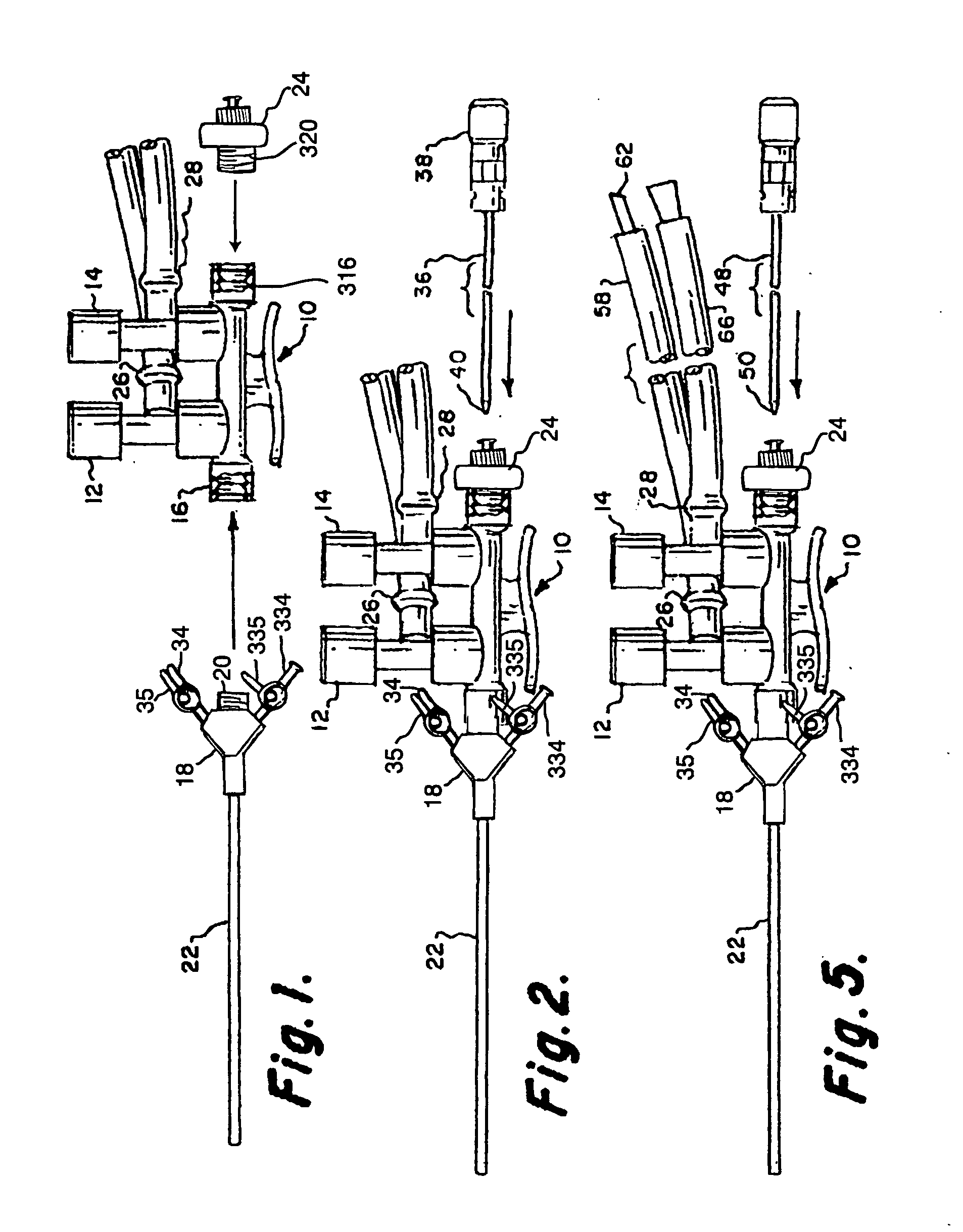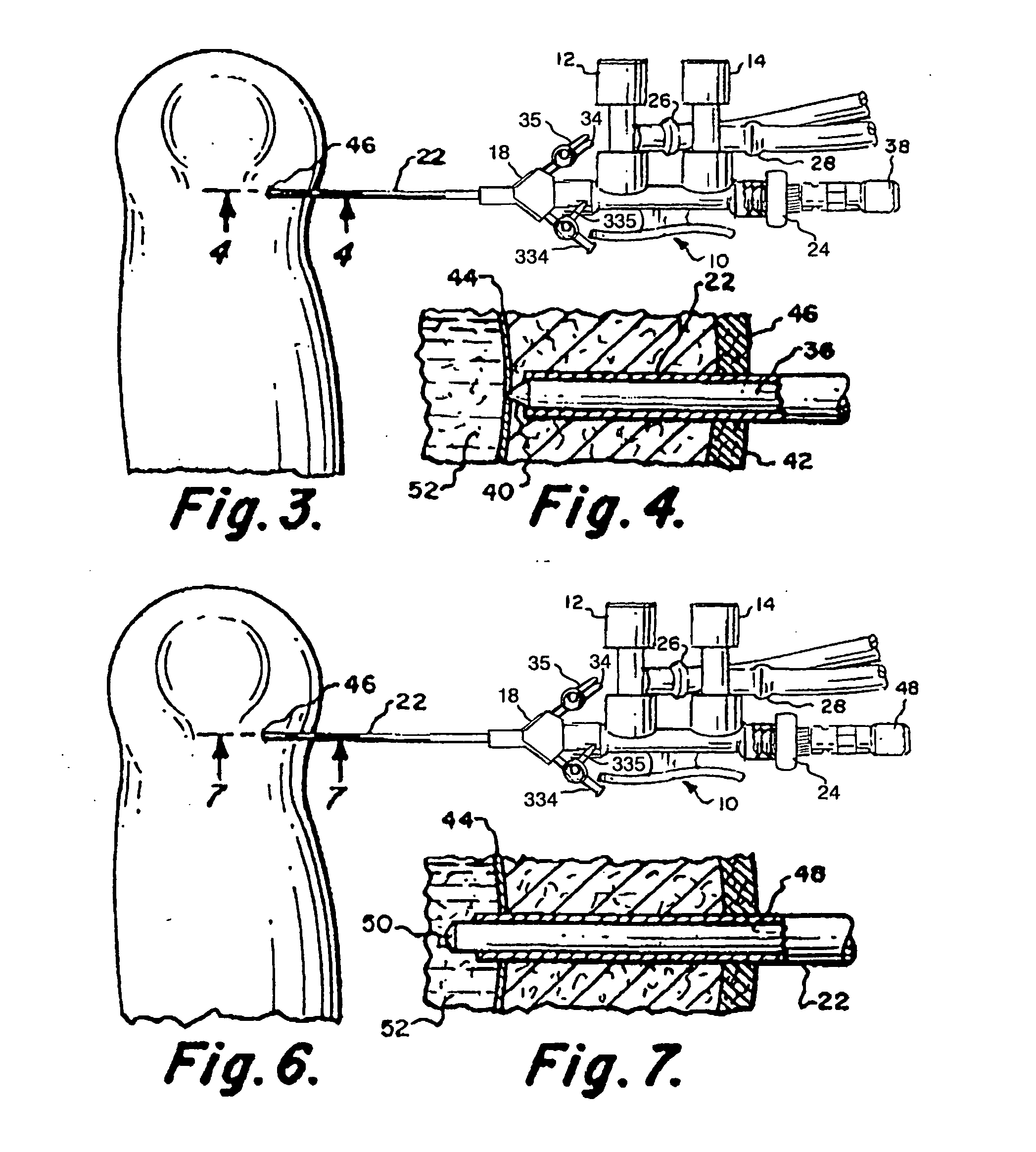Small single-port arthroscopic lavage, directed tissue drying, biocompatible tissue scaffold and autologous regenerated cell placement delivery system
a single-port, arthroscopic technology, applied in the field of arthroscopic lavage systems, can solve the problems of direct injury or trauma to the joint, abnormal wear and tear of the cartilage within the joint, and common osteoarthritis (oa) and other problems, to achieve the effect of high clinically documented success ra
- Summary
- Abstract
- Description
- Claims
- Application Information
AI Technical Summary
Benefits of technology
Problems solved by technology
Method used
Image
Examples
Embodiment Construction
[0117]The arthroscopic lavage and tissue drying procedure handpiece components of the system are illustrated in FIG. 1 and are comprised of a handpiece 10 having trumpet valves 12 and 14 and threaded socket 16 for receiving coupling 18 having threaded nipple 20 and a dual valve cannula22. Threaded nipple 20 is threaded into socket 16 in handpiece 10 to secure dual valve cannula 22 to handpiece 10. Fitting 24 on the opposite end of handpiece 10 has threaded nipple 320 and socket 316 for receiving coupling 24 to receive instruments to pass through handpiece 10, coupling 18 and dual valve swivel cannula 22 as shown in FIGS. 2 through 10.
[0118]Handpiece 10 also has irrigation and suction tubes 58 and 66 attached to trumpet valves 12 and 14 through channels 26 and 28. A unique feature of the invention is the inclusion of 2 auxiliary stopcock or ball valves 34 and 334 attached to coupling 18 which may be used for direct medication or cell placement into the joint and / or sterile synovial f...
PUM
 Login to View More
Login to View More Abstract
Description
Claims
Application Information
 Login to View More
Login to View More - R&D
- Intellectual Property
- Life Sciences
- Materials
- Tech Scout
- Unparalleled Data Quality
- Higher Quality Content
- 60% Fewer Hallucinations
Browse by: Latest US Patents, China's latest patents, Technical Efficacy Thesaurus, Application Domain, Technology Topic, Popular Technical Reports.
© 2025 PatSnap. All rights reserved.Legal|Privacy policy|Modern Slavery Act Transparency Statement|Sitemap|About US| Contact US: help@patsnap.com



